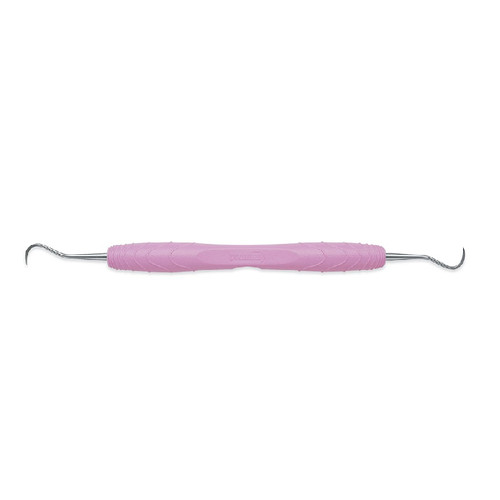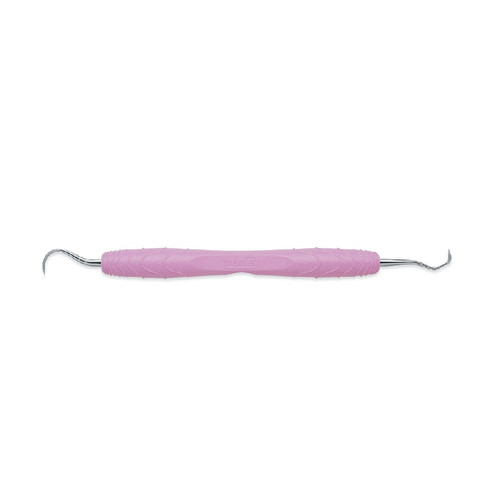- Designed for the removal of supragingival and subgingival calculus from all tooth surfaces, including posterior and anterior regions
Applications:
- Universal scaling:
- The H6/H7 is a versatile sickle scaler that can be used on all tooth surfaces to remove moderate to heavy calculus deposits
- Accessing tight spaces:
- The tip design is effective for navigating tight interproximal spaces and deep periodontal pockets in both the anterior and posterior regions
- Debridement and diagnosis:
- The scaler can be used for general debridement and for diagnostic purposes to check for irregularities and calculus build-up
- Periodontal maintenance:
- It is a valuable tool for routine periodontal maintenance and dental cleanings.
Features:
-
H6/H7 design:
- Double-ended, mirror-image tips:
- The instrument is double-ended, with a working tip on each end
- The H6 and H7 ends are mirror images of each other, allowing a clinician to access both mesial and distal surfaces of teeth with the same instrument
- Straight and angled shanks:
- he H6/H7 has a contra-angle design, meaning the shank is slightly angled to provide better reach and access to tooth surfaces, particularly in the anterior and premolar regions
- Sickle blade:
- The blade has a triangular cross-section and two cutting edges that meet at a pointed tip
- This design is highly effective for removing moderate to heavy calculus deposits
- Optimal access:
- The blade width is typically around 0.9mm and tapers to a point, allowing for effective cleaning in tight interproximal areas
- SmartSharp technology:
- The tips are made from heat-treated, cryo-hardened 440A stainless steel
- This technology ensures the tips maintain a sharp edge and precise angle for greater efficiency and less repetitive motion for the user
- Autoclavable:
- The durable polymer handle is designed to withstand multiple autoclaving cycles, ensuring longevity and proper infection control
- Designed for control:
- The handle and tip design allow the user to easily maintain control during instrumentation with less pressure required







